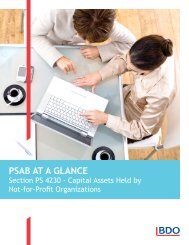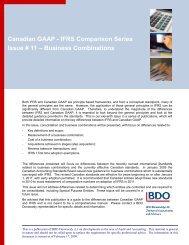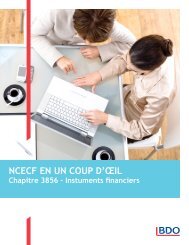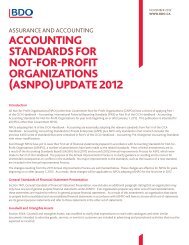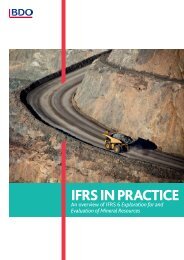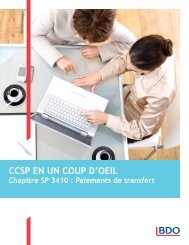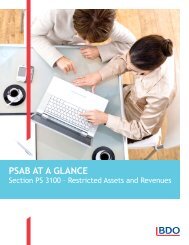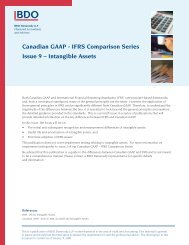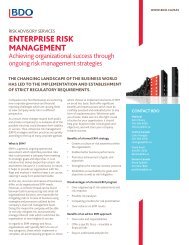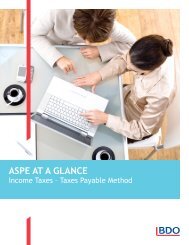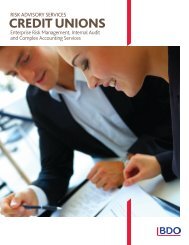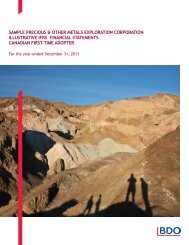Need to Know: IFRS 10 - Consolidated Financial ... - BDO Canada
Need to Know: IFRS 10 - Consolidated Financial ... - BDO Canada
Need to Know: IFRS 10 - Consolidated Financial ... - BDO Canada
- No tags were found...
You also want an ePaper? Increase the reach of your titles
YUMPU automatically turns print PDFs into web optimized ePapers that Google loves.
<strong>IFRS</strong> <strong>10</strong> <strong>Consolidated</strong> <strong>Financial</strong> Statements33Exposure <strong>to</strong> variability of returns from other interestsA decision maker (such as a fund manager) may, in addition <strong>to</strong> or instead of receiving remuneration for services,hold other interests in an investee (such as an investment in the investee) or provide guarantees with respect <strong>to</strong>the performance of the investee. In those circumstances, the decision maker is required <strong>to</strong> consider its exposure<strong>to</strong> variable returns from all sources when assessing whether it is an agent. Holding other interests in an investeeindicates that the decision maker may be a principal (<strong>IFRS</strong> <strong>10</strong>.B71).In evaluating its exposure <strong>to</strong> variability of returns from other interests in the investee a decision maker is required <strong>to</strong>consider the following:––The greater the magnitude of, and variability associated with, its economic interests, considering its remunerationand other interests in aggregate, the more likely the decision maker is a principal––Whether its exposure <strong>to</strong> variability of returns is different from that of the other inves<strong>to</strong>rs and, if so, whether thismight influence its actions.The decision maker is required <strong>to</strong> evaluate its exposure relative <strong>to</strong> the <strong>to</strong>tal variability of returns of the investee(<strong>IFRS</strong> <strong>10</strong>.B71/72).<strong>BDO</strong> commentIAS 27(2008) and SIC-12 did not provide explicit guidance for principal-agent relationships. As a consequence SIC-12was often applied <strong>to</strong> arrangements, based on their predetermined nature and their exposure <strong>to</strong> risks and rewards.This is because the operating arrangements for many funds contain restrictions on the scope of the fund manager’sactivities, meaning that it was often concluded that the fund met the SIC-12 definition of an SPE. The ‘bright line’ testthat then followed was that the fund manager was required <strong>to</strong> consolidate the fund only if there was exposure <strong>to</strong> themajority (so more than 50%) of variations in the fund’s performance.<strong>IFRS</strong> <strong>10</strong> includes specific guidance for principal-agent relationships, and does not include any minimum threshold forthe amount of a fund manager’s exposure <strong>to</strong> returns. Instead, all it requires is exposure <strong>to</strong> ‘variability’ in returns which issignificant enough <strong>to</strong> result in the fund manager’s return being potentially greater than a market rate of remuneration.This could result in a different control assessment for some funds.



